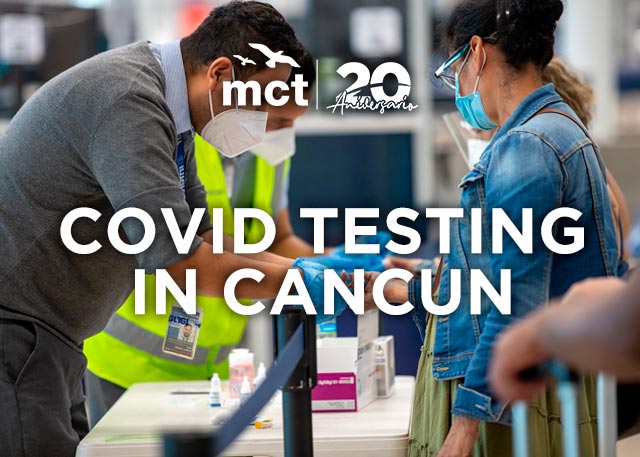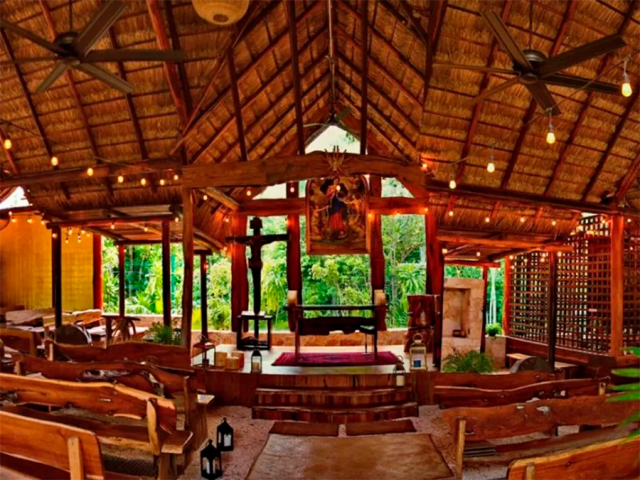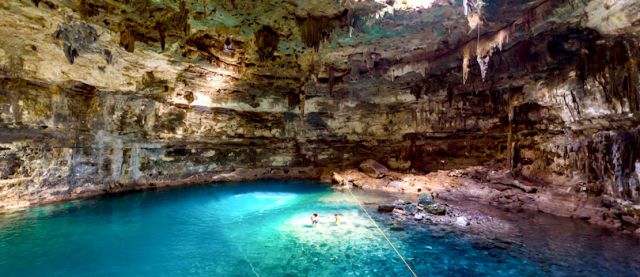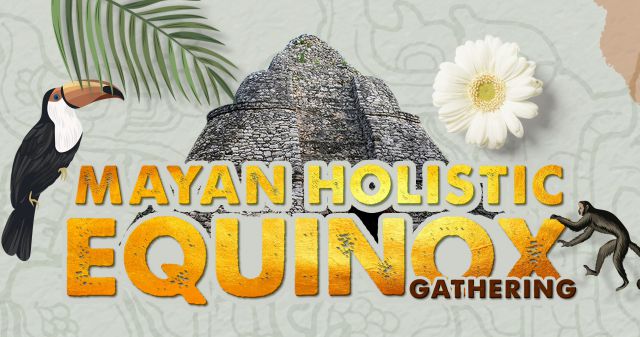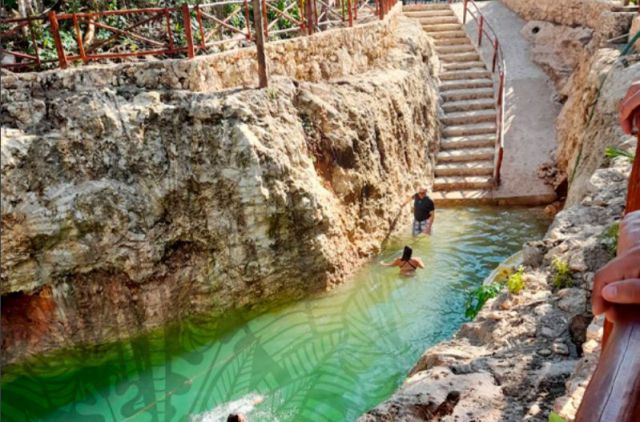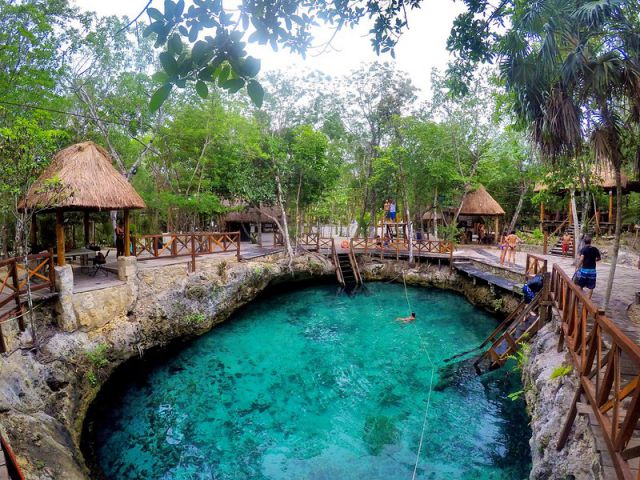what do the cenotes mean?
“Ts’ono’ot:” which means ‘hole with water’ is a flooded cave. There are several types of it ;, surface, draft and underground or cave. This classification is directly related to its antiquity, the oldest being those that are completely open and the most recent those that still have their dome intact. Like many other geomorphological structures, they are transitory structures, which can eventually end up filled and dried out. Visit these wonders on a Private Tour
The cenotes show one of the most striking natural wonders of the landscape of the Yucatan Peninsula in Mexico. This huge territory that is characterized by lacking surface rivers that cross most of the Mayan area, these natural wells represent the main water supply of the pre-Hispanic Mayan populations, there is no doubt that their presence helped their development, and in fact large Cities such as Chichén Itza, Tulum or Coba to name a few, took advantage not only of their natural conditions, but were also considered sacred places.
If you’re planning a trip to Cancun, Mexico during the pandemic, it’s important to know about the COVID Test Cancun…
If you look for the best way to spend Christmas and NYE at Cancun and the Riviera Maya. Then prepare…
If you are in the Mexican Caribbean, you cannot miss out on these 6 mos recomended cenotes in…
LET’S WELCOME SPRING TOGETHER Let’s celebrate life in Mayan Equinox, surrounded by nature in a unique place! It is about…
The Cenote Kooleb Caab is located in the Yucatan peninsula. There are more than 6000 registered cenotes. Which were formed…
The cenotes are wells of water, most of them are very deep. Which are fed by the filtration of the…
Sacred Places
Considered a source of the vital liquid, cenotes have had a very special place in the ritual life of Mayan groups. In the surroundings temples were built in which different rituals associated with rain and fertility were carried out, in their sacred waters they used to throw various objects, through these found objects we can understand the artistic ability of the ancient Mayans and the largest offering that you could do went to the gods. It is worth mentioning that today many cenotes continue to be centers of veneration and worship, as the main element, water, which continues to be and will continue to be the fundamental liquid for the survival of the communities even that inhabit the Mayan area.
All you need is Centoes
The cenotes are a magnet for tourists and researchers who constantly come to carry out exploration work in which a large number of objects have been located in excellent condition and of admirable manufacture, in addition to confirming how important their waters are as a means of communication with divine beings. In recent years, several studies have been carried out in which methods and techniques are used in accordance with the complexity that the nature of the cenotes implies. Many underwater explorations have been made that have given an important advance to archaeologists, geological studies have also been carried out to better understand the formation process of these peculiar wells, the importance with the development of the great cities of the region, and of course the vision on these and their role in the history of the Mayans of the north of the Yucatan peninsula.
Visit them on a Private Tour.


